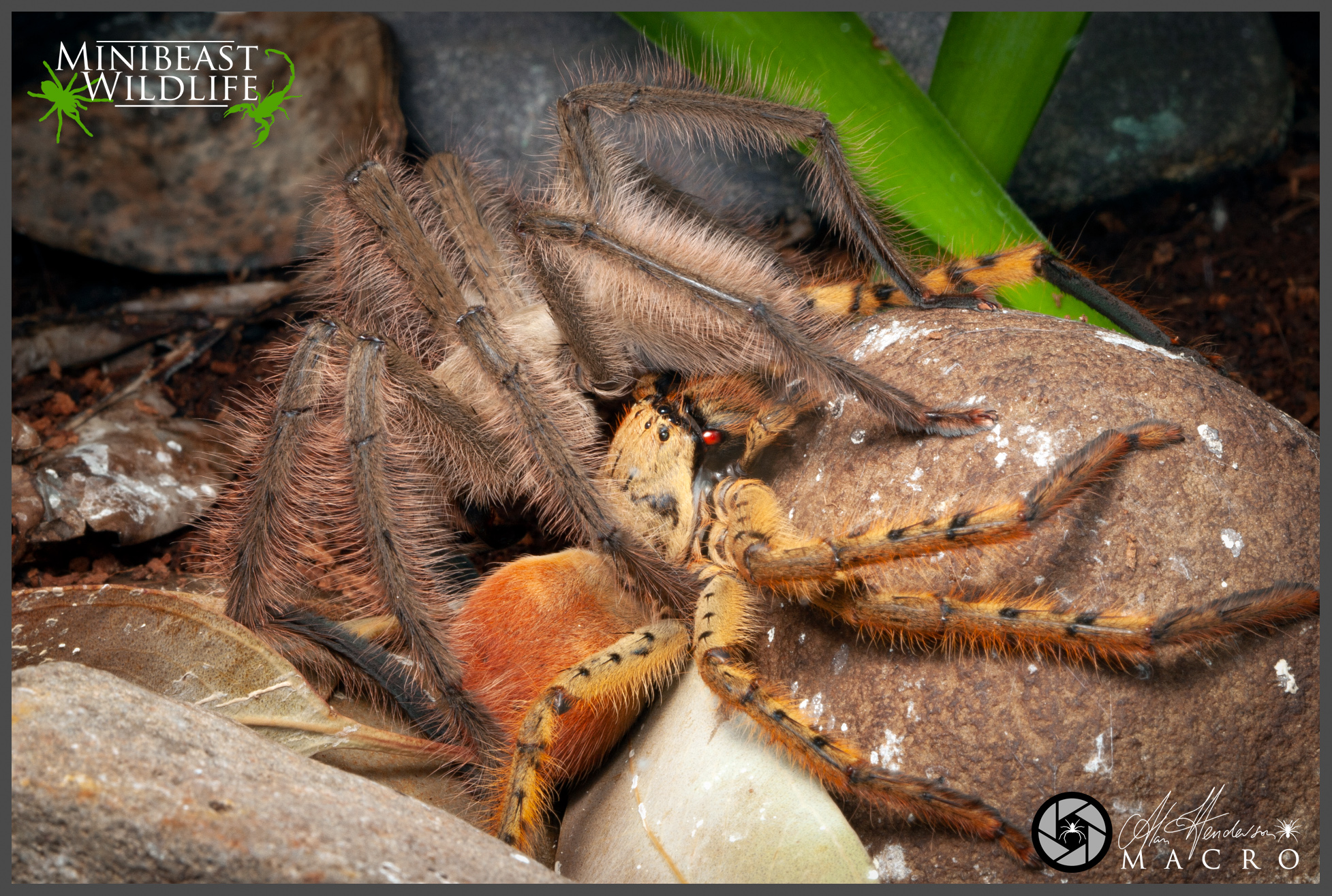AUSTRALIAN INVERTEBRATES
Tiger Huntsman spider
The Tiger Huntsman is one of Australia’s most spectacular spiders. We first collected this species in 2006 and at that stage there were no official records of this species.

The Tiger Huntsman is one of Australia’s most spectacular spiders. We first collected this species in 2006 and at that stage there were no official records of this species.


In December 2006 while on a field trip in north Queensland for Melbourne Museum we discovered an amazing spider, the likes of which we had never seen before. We knew immediately that this was something special, and it was no surprise to find on our return to the Museum that it was a new species to science. The initial female specimen was gravid and at Melbourne Museum we managed to raise and even breed from her offspring. Specimens have been submitted to Australia’s huntsman taxonomists, and the species awaits classification.
Their initial work suggested that it may belong to the Typostola genus, however, molecular work on Tiger Huntsman we have sent to the US has proved somewhat inconclusive and more taxonomic work needs to be done. There is potential that it may be placed in a new genus. Since moving to north Queensland in 2010 we have sighted over a dozen more wild Tiger Huntsman specimens, and also have a stable captive breeding group of this remarkable species.
Whether or not this species is rare in the wild is hard to tell. They are certainly hard to find and rarely encountered compared to the other Sparassid species throughout the wet tropics of north Queensland. Their daytime retreats are within rainforest leaves that are silked together and look similar to small Green Tree Ant (Oecophylla smaragdina) nests. Our experience with them in captivity suggests that they may even hunt from these retreats and ambush prey that walks ventures onto the leaves they shelter within. These spiders are very agile, and despite their large size, jump confidently from leaf to leaf. We have recorded adult females jumping distances of over 40cm to nearby branches and leaves.
Like most other large huntsman they are opportunistic predators, feeding upon small animals that they rapidly overpower. Invertebrates would comprise the majority of their prey, however they would most likely capture small vertebrates such as tree frogs and geckos in the wild.

Females produce a white disc-shaped egg sac about the size of a 50 cent piece. They create a nest chamber from silk and leaves while incubating their eggs. Eggs take around a month to hatch and the spiderlings remain with their mother in the nest chamber a week or more before dispersing. In the wild few offspring would survive, so in captivity this is where the intensive work begins.
We have been keeping and breeding Tiger Huntsman since 2007 and have learnt a great deal about the husbandry of these intriguing spiders. While there is still little known about their habits in the wild, our observations of this species in captivity and snippets that we can gather from them in the wild paint a picture of an agile hunter perfectly adapted to life in the lush rainforest foliage. Some of our observations indicate that they may at times hunt a little like trapdoor spiders, ambushing prey that wanders across their leafy retreats. This coming season we will be filming these behaviours for the first time to document this amazing species and its fascinating behaviour for others to see.



